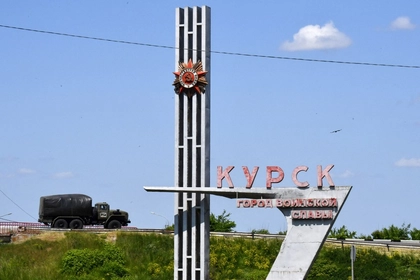Earlier this year the open-source intelligence website “Frontelligence Insight” made public a report on the Russian Defense Ministry’s regulation called “On Z Assault Companies.”
The captured report is said to have been revealed by a Ukrainian army reservist. Excerpts from the document were apparently used as the basis for an April 6 bulletin by the US-based Institute for the Study of War (ISW) and the UK Ministry of Defence Oct. 24 intelligence update.
JOIN US ON TELEGRAM
Follow our coverage of the war on the @Kyivpost_official.
The wording in these modern regulations bears comparison with those issued in 1942 by the Soviet Army’s Deputy Commander-in-Chief, Georgy Zhukov entitled “The Status of Penal Units of the Army.”
The latest document states that they will be formed into specialist, highly trained assault groups when in fact, the Storm-Z units are seen now as being no better than the “Shtrafbats” – the Soviet penal battalions that fought on the Eastern Front in World War II.
The first “Storm-Z units were formed in October last year as Russia’s Ministry of Defense began recruiting prisoners after taking over from the Wagner Private Military Company (PMC), which had previously been authorized to enlist convicts with promises of pardons for their crimes.
The Russian doctrine defines a “Storm-Z” Company as: “a temporarily created independent, combined-arms unit outside the regular army structure for immediate operational tasking to carry out particularly complex combat missions.”

Russia Says Its Troops Are in Sudzha – Ukraine’s Military Remains Silent
It says each unit will be based on 100 to 150 personnel organized within a flexible structure dependent on the allocated combat mission, which will include reconnaissance, capture, fire support, combat engineering, medevac and UAV control teams.
The modern regulations make sobering reading for a 21st century audience. In summary the regulations address the following:
The document says that an initial Storm-Z contract for members of the special contingent is supposed to be six months. Following satisfactory completion of their contracts, volunteers may be pardoned, offered a new contract or allowed to return to Russia under their own arrangements. Reports on social media say that many prisoners are not released on completion of their contracts and are forced stay on the front line under new contracts.
Other policies contained in the document include the following:
- Storm-Z recruits from will not be allowed to serve with others from different prisons or with other contracted military personnel.
- Their tasks are to lead the assault in urban settings or in difficult terrain to seize key objectives, carry out sabotage operations, counter enemy sabotage and reconnaissance groups, adjust artillery fire and air support.
- The training period allocated to Storm-Z personnel is fixed at 10 to 15 days after recruitment, depending on any individual previous military experience. Training is supposedly organized into three phases covering individual military skills, unit operational and tactical training, and operational coordination with other formations.
- Members of the unit may only leave the battlefield in the event of serious injury or death.
- Primary medical care will be limited “to the extent of self-administered and mutual aid.” A Storm-Z medical department consists of a driver, one medical orderly and a commander.
- The bodies of dead prisoners are to be stored in morgues separately from those of regular Russian army servicemen.
- Commanders of formations to which Storm-Z units are to use military police convoys to escort convicts “from the moment of transfer of personnel by representatives of the Federal Penitentiary Service to representatives of the [receiving] unit,” to ensure the “observance of military discipline.”
- Commanders may use blocking units [barrier troops] to prevent Storm-Z personnel from fleeing the battlefield and commanders are authorized to use lethal force “to restore discipline and order in case of open disobedience.”
An Oct. 3 Reuters report confirmed how poorly trained and equipped Storm-Z soldiers and units are, and how it made a mockery of the organization and roles laid out in the regulations. It said the Storm-Z units consist of about 100 to 150 strong and are embedded within regular army units, but are typically sent to the most exposed parts of the front and often sustain heavy losses with little or no attempt to evacuate casualties.
It quotes one Storm-Z soldier who claimed that only 15 of his original 120-man unit remained after fighting near Bakhmut in June. It was also claimed that those serving in the unit were not all convicts. One soldier said that “anyone with the smell of alcohol on their breath,” could be immediately sent to a Storm-Z squad.
As one regular Russian soldier who had fought alongside them told journalists: “Storm fighters – they’re just meat.”
You can also highlight the text and press Ctrl + Enter










![[WATCH] Russia Experiments With Motorcycle Amphibious Landing](https://static.kyivpost.com/storage/2025/03/10/dad22f0a439d809b5ed387196f3d2255.png?w=840&f=webp)